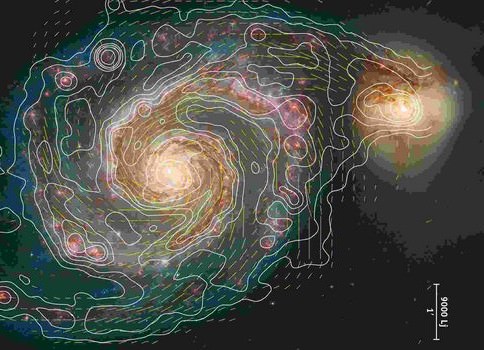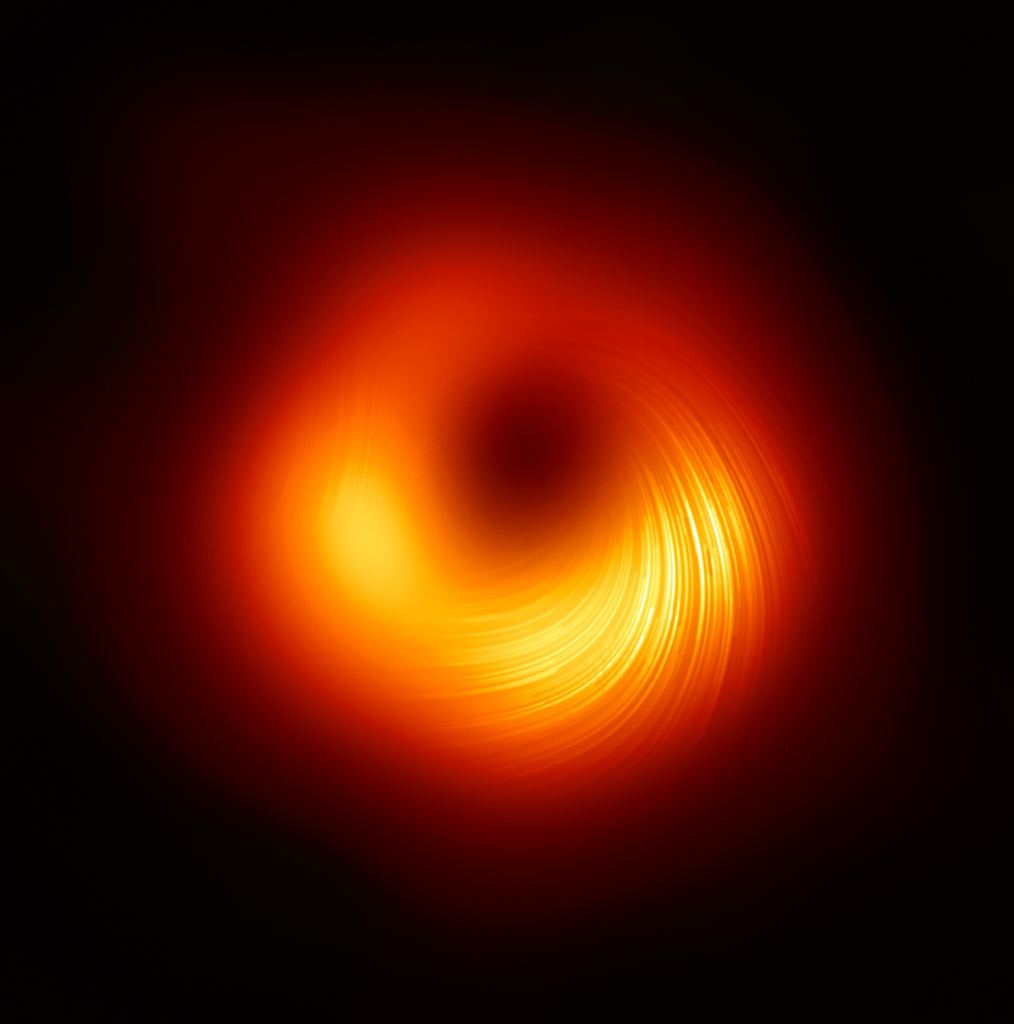The Event Horizon Telescope has Revealed the Magnetic Field Lines Around M87’s Central Black Hole
In 2019 astronomers captured the first direct image of a black hole. It was an image of the supermassive black hole at the heart of M87. And when many folks saw it, their reaction was “that’s it?” Which is understandable, given that the image is just a blurry, donut-shaped smudge. It isn’t much to look at. But an astronomical image is a small fraction of the data gathered by astronomers. Recently more of that data has been analyzed, including both the polarization of the light and the magnetic field surrounding the black hole.
Polarization is a basic property of light, just like wavelength or intensity. If you imagine light as a wave that oscillates as it travels through space, then polarization is the orientation of that oscillation. Light waves may oscillate up and down, left and right, or even spiralling clockwise or widdershins. When light comes from hot source, such as the material surrounding a black hole, lots of polarizations are jumbled together so that the light is basically unpolarized. But when light passes through ionized gas, different polarizations interact with the gas more strongly or more weakly. As a result, the light that reaches Earth is polarized. By studying the polarization of light near the M87 black hole, we can learn about the surrounding material.

In the case of radio astronomy, there is also a polarized source of light known as synchrotron radiation. This occurs when electrons are trapped by magnetic field and move along the field lines in tight spirals. The polarization of sychrotron radiation tells us the orientation of the magnetic field lines.
In this latest work, astronomers measured the polarization of light observed near the M87 black hole, and found it had a twisted spiral pattern. This is somewhat expected, because we know the black hole rotates. As it does, it drags nearby space around it. The overall pattern is indicative of the gravitational structure of the black hole.

But what’s interesting is that most of the light observed isn’t polarized. Only about 15% or so of the light is polarized. Most of the light from near the black hole is unpolarized. That’s unexpected, because ionized gas near the black hole should be highly magnetized, so we’d expect the light reaching us to be strongly polarized. So what gives?
It seems that gas near the black hole is magnetized, but rather than having a magnetic structure that is large and simple, the magnetization is a chaotic jumble at smaller scales. The scale at which the magnetization has a random-like orientation is smaller than the resolution of the Event Horizon Telescope. So things blur out. All the small scale polarizations blur together to appear unpolarized.
Results like these are important because they give us tremendous insight on the material and magnetic fields near black holes. As we understand more, we will be able to the complex processes that creates active black holes and how they interact with the surrounding galaxy. All of that information is buried in the data, and it’s more than meets the eye.
Reference: Akiyama, Kazunori, et al. “First M87 Event Horizon Telescope Results. VII. Polarization of the Ring.” The Astrophysical Journal Letters 910.1 (2021): L12.
Reference: Akiyama, Kazunori, et al. “First M87 Event Horizon Telescope Results. VIII. Magnetic Field Structure near The Event Horizon.” The Astrophysical Journal Letters 910.1 (2021): L13.
The post The Event Horizon Telescope has Revealed the Magnetic Field Lines Around M87’s Central Black Hole appeared first on Universe Today.
Universe Today
Go to Source